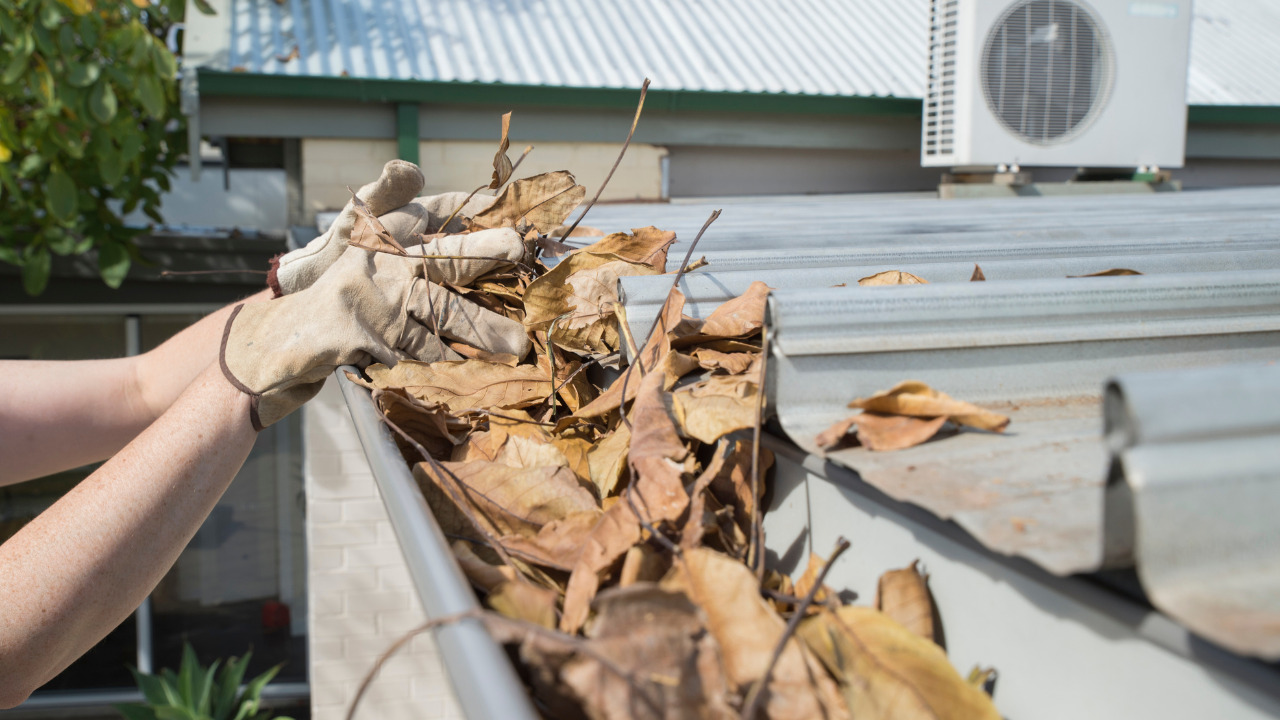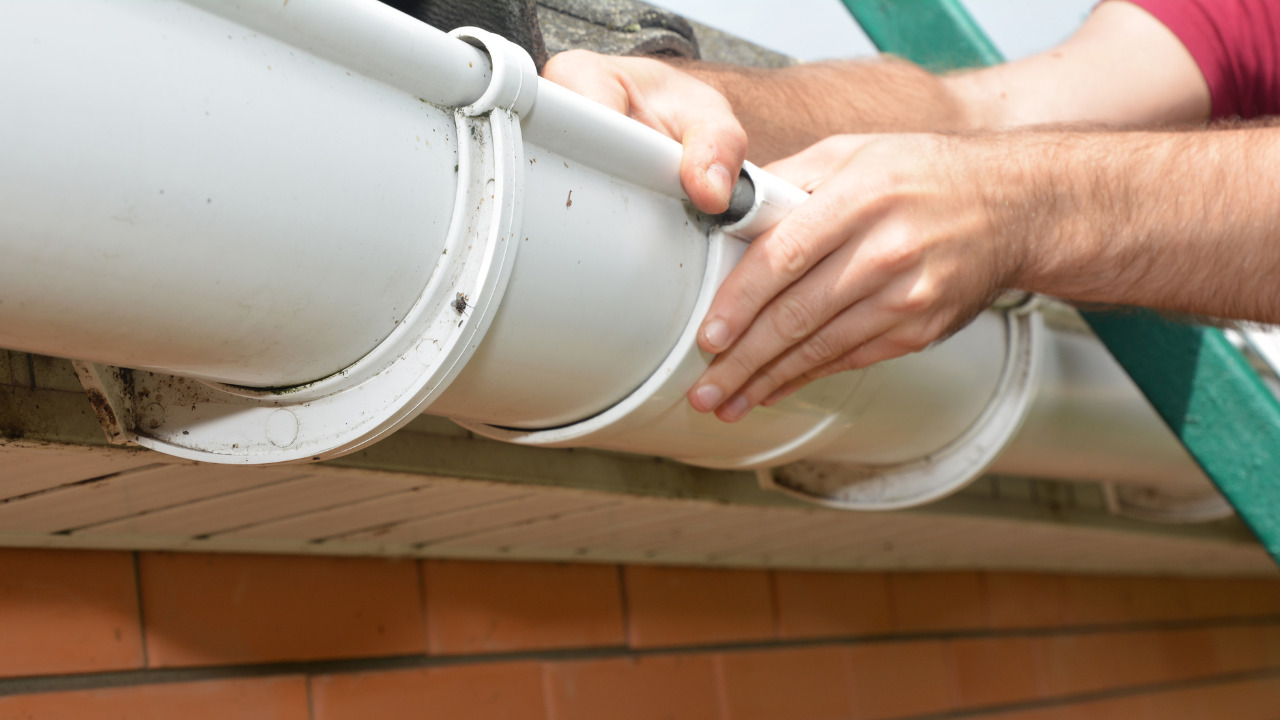A steel gutter is sturdy and attractive but requires regular maintenance to keep it watertight. You’ll need a roofer’s a soldering iron and tin solder to complete the installation, mend the gutter stop, or patch a leak. You can do this using the proper equipment: a professional soldering iron.
However, you must be cautious because your repair will only be accomplished if the gutter is not severely damaged. You won’t have enough material to fix your gutters if they’re too badly damaged, with many holes that form a fine lace pattern.
Soldering is frequently required to hermetically unite the various aluminum, steel, or copper exterior gutters. Because of temperature swings and other factors, caulk does not always stay as permanent as homeowners would like. Soldering gutters is comparable to soldering water pipes, requiring the same tools and precautions.
Table of Contents
A Few Considerations For Soldering Galvanized Steel Gutters
Every good worker works in spotless conditions. Only solder on clean surfaces and sanding the surface is critical for keeping the parts you will weld clean. Paint remover eliminates oxidation and rust on metals exposed to the elements.
The paint stripper also prepares the surfaces so that the solder metal can spread more evenly on the components to be bonded. Of course, the solder has to be fluid and workable.
Select a roofing iron with temperature control. It would help if you regulated it depending on the cold and the wind to make it ideal for welding. You’ll need to be able to regulate the flow of gas. The soldering points may break if any moisture is left on the parts to be joined. Your solder tip should be large enough and, most importantly, always clean.
A Few Important Tips For Soldering The Steel Gutters
Cleaning the material is crucial to a successful soldering job. You can’t emphasize how important it is to keep the metal you’re trying to solder clean since it greatly impacts how well it works and looks.
Strip the metal bare on both seam sides with a wire brush or another abrasive. This is a critical step since the solder will not attach to oxides.
Although galvanized steel has weak thermal properties, it can still be soldered if the right procedures are followed. The material you’re soldering determines the type of flux you use. Soldering flux has only one purpose when combining roofing materials: it prevents metal oxidation, which leads to poor solder adhesion.
Some metals require a more aggressive or acidic flux to produce a good joint. Remember to clean your seam with soap and water to remove any remaining flux that could corrode the metal.
Clean The Gutters
To properly accept the flux and solder, the ends of the joins must be clean and bare. This is done by rubbing the ends of the metal with emery or pipe-cleaning paper until it is bare and polished. After that, wipe the ends with isopropyl alcohol to remove any leftovers.
Please wait until the soldering tip of your iron is hot enough for the tin bolt you’re using as a filler metal to become liquid and flow after you’ve turned it on.
To make weld points along with the whole joint, press forcefully. The next step in the soldering process is to slide the soldering tip over the entire connection until it smooths out and makes a neat line. As a result, the solder will penetrate by capillary action.
The quality of a weld is determined by capillary penetration and adhesion to the pieces to be joined, not by the amount of filler metal used.
Add Flux Gel
Flux is essential for ensuring that the solder flows uniformly over the joint. In nature, flux is frequently purple and gel-like. The flux should be painted equally across the inner edge of one part of the gutter and the matching outer margin.
For galvanized steel, you’ll need a zinc chloride acid-type flux. Rosin isn’t active enough to get the job done. A large old-fashioned soldering copper is also required Because a flame is too difficult to manage, and most soldering irons lack the necessary wattage.
Any joint should have an overlap. Your prospects improve if you can accomplish the work on the ground. Because it has a wide plastic range, use half the solder. If not, welding and plumbing wholesalers should be able to help you.
Add A Heat Sheet
Because many gutters run up against combustible surfaces like siding or shingles, a heat shield is frequently required between the gutter and the flammable surface. This is not the time to use aluminum foil. Steel baking sheets or specialized shields can be utilized in a pinch.
To firmly attach the two ends of the gutters, press them together. While applying the solder against the joint, warm the ends of the gutters with a high-wattage hand-held torch. Solder melts and wicks along the join, following the flux, once the metal has been suitably heated.
Install Prefabricated Gutter Stops
Using a prefabricated stop, cut your guttering with a nibbling shear to shut the end of your guttering. This is preferable to a sawing, which can deform the profile. Before installing the stop, use a soft file for deburring the gutter’s edges.
Remove the paint from the surfaces and solder the zinc with tin. When you’re finished working, never submerge your solder iron in cold water to cool it down; otherwise, you risk ruining the grill and the iron in general.
Benefits Of Installing Galvanized Gutters
Zinc is applied to steel gutters to protect the drainage system as a whole. The zinc layer is the strongest mechanical strength of all the materials used to make gutter systems, which protects against other external influences. Galvanized steel gutter systems are predicted to last up to 50 years or even longer.
Several color variations are offered for full galvanized steel gutter systems and individual components. Therefore you may complement the color and design of the house facade or the tiny garden architecture.
Frequently Asked Questions
Are galvanized gutters durable?
Steel gutters are incredibly strong, and galvanized steel items, in particular, do particularly well in adverse weather.
Why are galvanized gutters popular?
In addition to being a fairly common building material, galvanized steel is very common for industrial and commercial gutter systems. It is essentially steel hot-dipped into zinc oxide, creating a barrier to thwart rust, corrosion, and oxidation.
Are galvanized gutters better than aluminum gutters?
Galvanized steel gutters are the most affordable, with installed costs ranging from $5 to $9 per linear foot. Aluminum gutters are less resilient to ladders and smashed branches than steel gutters. Yet ultimately, rust can penetrate even thick galvanized steel. Yet, aluminum gutters never rust.
Conclusions
Galvanized steel sheet is one of the materials utilized in gutter system construction. Modern machinery makes each component of this guttering, ensuring its reproducibility, which translates to compatibility and the ability to connect the components.
Thick sheets are employed in the manufacturing of such systems. The most often used guttering is constructed of galvanized steel sheets.











